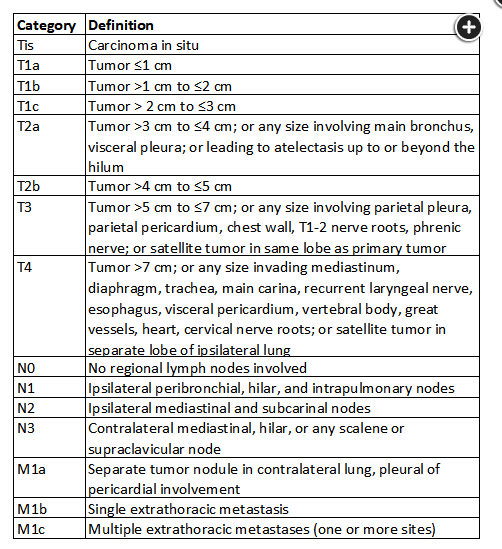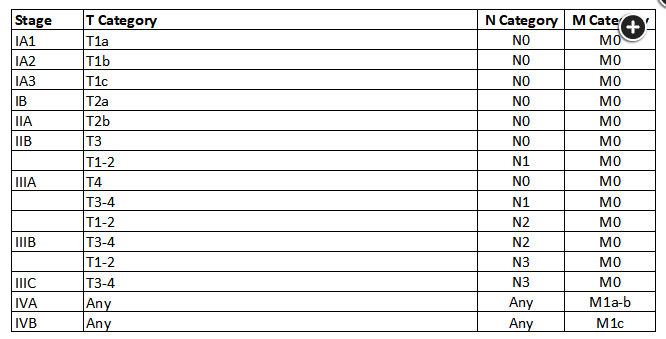TNM node staging for lung cancer
- related: lung mass and cancer
- tags: #permanent #pulmonology

The tumor (T) category is based on the size of the tumor, its location, or its invasion of nearby structures, whichever leads to the highest category. The T category was updated in the last iteration of the staging classification to reflect better the influence that size has on prognosis and to include an improved understanding of the effect of the tumor’s location. The T category now has subdivisions in 1-cm increments up to a tumor size of 5 cm. The effect of larger tumors on outcomes is reflected by higher T categories for tumors 5 to 7 cm in diameter and greater than 7 cm. Tumors that involve the main bronchus are T2a regardless of how far they are from the main carina or how much atelectasis they cause. Those that directly invade the visceral pleura are T2a; the parietal pleura, pericardium, or chest wall, T3; and the mediastinum, diaphragm, trachea, main carina, esophagus, vertebral body, or great vessels, T4. A satellite tumor in the same lobe as the primary tumor is T3 and in a different lobe in the same lung is T4.
M1a is used when there is a malignant pleural or pericardial effusion, pleural or pericardial nodules, or separate tumor nodules in the contralateral lung. M1b is used to describe a single extrathoracic metastasis and M1c is for multiple extrathoracic metastases. M1a or M1b are stage IVA, and M1c is stage IVB.
| N (Regional Lymph Nodes) | |
|---|---|
| N0 | No regional node metastasis |
| N1 | Metastasis in ipsilateral pulmonary or hilar nodes |
| N2 | Metastasis in ipsilateral mediastinal/subcarinal nodes |
| N3 | Metastasis in contralateral mediastinal hilar or supraclavicular nodes1 |
- N1: ipsilateral 10, 11
- N2: nodes 4, 7
- N3: contralateral 10, 11
